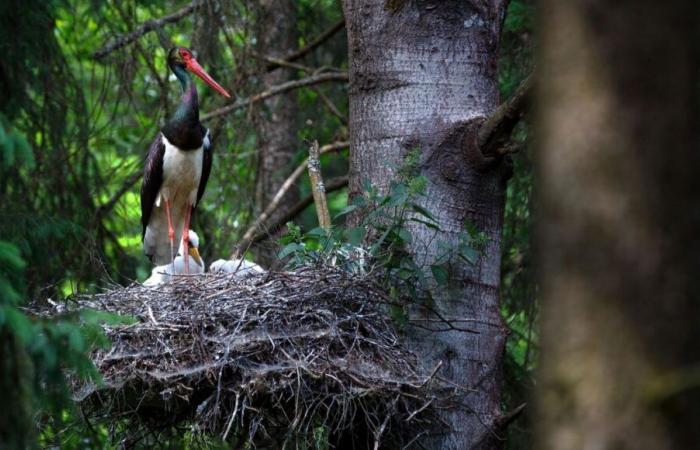Producing green energy, which does not impact the Climate, is what we all want. But if this is done to the detriment of biodiversity already seriously damaged by our practices, it will not be viable for biodiversity, nor ultimately, for humans, on this planet.
The Charnizay wind farm project refused to protect the black stork
After Sepmes, the project to install a wind farm (project of four wind masts and an electrical delivery station) in Charnizay in South Touraine has just been refused on November 12 by prefectural decree “due to the fact that it is likely to harm the conservation of the black stork” (source Prefectural Order SAIPP/BE/N°21370). We can therefore question this paradox which opposes so-called green energy (which is on the rise if I may say so, due to the necessary ecological transition) and the preservation of biodiversity, on which we directly depend for our survival. What is the importance of having electricity if we no longer have food to eat?
The survival of the black stork: a constant battle
The Black Stork Regional Group (GRCN) is extremely vigilant on all these projects which can potentially harm the survival of this protected species, which appears on the Red List of the IUCN (International Union for Conservation of Nature) in France, is considered a species in dangerous as a breeder and vulnerable as a passage species. The GRCN, made up of experienced ornithologists, collects in the field, explains Jean-Frédéric Baéta of the GRCN, using various techniques and devices such as camera traps and observations from water towers on the canopy, data on the presence of the black stork which he can attest to. To date, there are no less than 15 wind farm projects that have been buried in our region, due to the presence of this large, particularly fierce wading bird.
Why are wind energy production and black storks incompatible?
The presence of a wind farm in the territory of black storks, mainly forest, which measures around 20 km in radius around a nest can, Jean-Frédéric Baéta of the GRCN explains to us, compromise movement, feeding and reproduction. black storks, all vital actions for this rare bird, particularly sensitive to human disturbance which could abandon its nest if disturbed by the installation of wind turbines. “This effect is also particularly documented for raptors, such as the golden eagle (Aquila chrysaetos) or Milan Royal (Kite kite), which can be equipped with beacons and which are often present in highly windy areas of the south of France conducive to the development of wind power. This sensitivity has also been observed in other species, notably those dependent on wetlands” (source: National Society for Nature Protection)
@ilknur / 500px
Green gold against biodiversity?
The black stork has become the “bête noire” of wind farm promoters but it represents the tip of the iceberg because it is ultimately all the biodiversity present in these forest areas and the surrounding wetlands which is affected by these installations. The enormous financial stakes have not yet been met due to the indisputable precision of the documents provided by the defenders of biodiversity (black storks, other birds but also chopped-up bats). small and scattered hundreds of meters from the wind turbines). Jean-Frédéric Baéta deplores terrible bad faith on the part of the promoters, a lack of interest and a lack of curiosity and documentation regarding the impacts on biodiversity of these installations, money seeming to be their only motivation, he tells us.
Should the production of so-called green energy obscure living things? We have already caused the collapse of 70% of biodiversity in all environments, should the ecological transition come at the cost of an additional sacrifice? Let us not forget that our life depends on the richness of ecosystems, which are best able to protect us from other epidemics and to feed us. So what does it matter if the black stork has no money?
France






